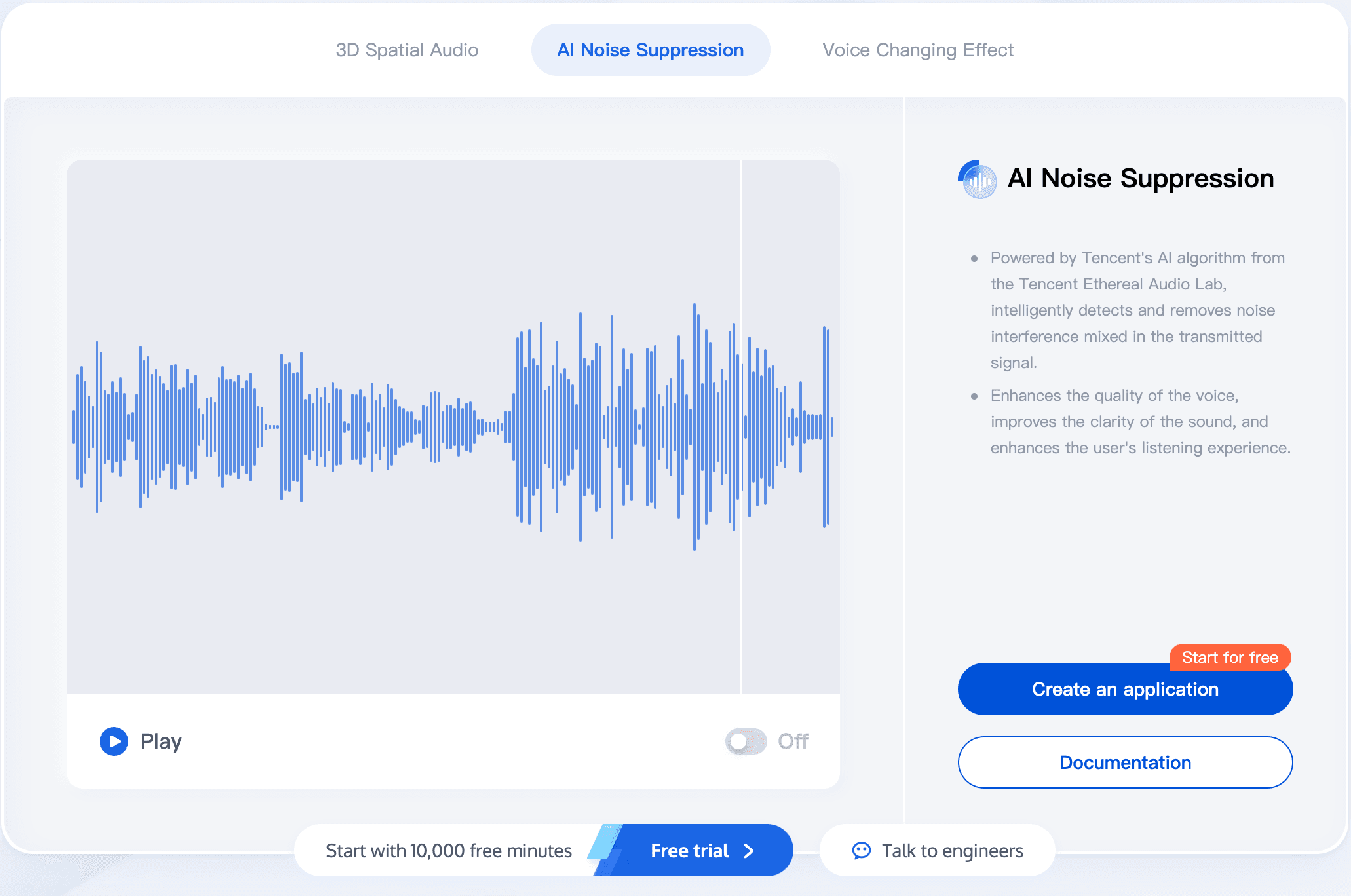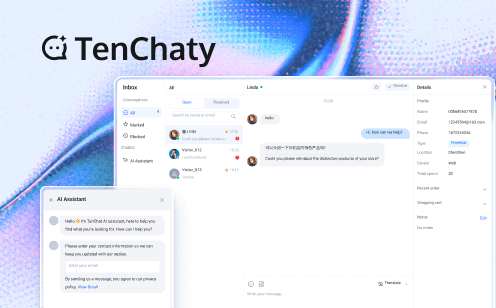Understanding Noise Suppression: A Comprehensive Guide to Audio Quality Enhancement
In the era of digital audio, noise pollution has become an important factor affecting sound quality. Whether it's recording music, shooting videos, or during a phone call, background noise always invades our auditory experience silently. Audio noise suppression technology, as a powerful tool in the field of modern sound processing, can accurately identify and effectively eliminate these noises, thus making the original sound clearer and purer. This article will introduce you to audio noise and related noise suppression technologies, explore their working principles, application fields and future development trends, so that we can look forward to a purer and more touching auditory world together.

What is Noise Suppression?
Noise suppression is a technology that reduces or eliminates unwanted sound signals through various means, and is widely used in fields such as speech recognition, voice communication, industrial noise control, and environmental noise control. Noise suppression works by analyzing and distinguishing between desired signals (such as speech) and unwanted noise in the audio signal, then applying algorithms to minimize or remove the noise while preserving the quality of the desired signal.
Common noise suppression techniques include spectral subtraction, Wiener filtering, noise gating, adaptive filtering, and modern AI-based approaches. This technology is particularly important in applications ranging from audio/video communications to industrial equipment and environmental noise management.
How Noise Suppression Works?
Audio noise suppression technology reduces or eliminates unwanted noise components in audio signals through various methods, thereby improving the quality of speech signals. Here are several common audio noise suppression technologies and their working principles:
- Linear Filters: This is a band noise reduction method suitable for situations where the noise frequency band is known. By designing linear filters or filter banks to eliminate noise in specific frequency bands, they are commonly found in audio acquisition hardware.
- Spectral Subtraction: This method first estimates the spectral energy of the noise and then subtracts this noise spectral energy from the audio spectrum. It is particularly effective for stationary noise reduction in both real-time and offline processing.
- Statistical Model-Based Noise Reduction: These algorithms use statistical methods to estimate the energy distribution of noise and speech at each frequency point of the audio, particularly effective for relatively stable background noise.
- Wiener Filtering: This is a linear filter designed using the minimum mean square error criterion for optimal noise reduction, widely used in speech enhancement applications.
- Deep Learning-based Noise Suppression: Modern approaches like RNNoise utilize Deep Neural Networks (DNN) to identify and remove noise. These models can learn complex noise patterns and achieve excellent suppression effects with high computational efficiency. RNNoise specifically employs Recurrent Neural Networks (RNN) for temporal modeling of noise characteristics.
- Spectral Gating: A noise suppression method based on Fast Fourier Transform (FFT), it analyzes the spectrum of the audio signal and applies adaptive thresholds based on the statistical characteristics of the noise to achieve selective noise suppression.
- Adaptive Filters: These filters dynamically adjust their coefficients to minimize the error signal, achieving real-time noise suppression. Common implementations include LMS (Least Mean Square), BLMS (Block LMS), and NLMS (Normalized LMS) algorithms.
- LogMMSE Algorithm: This method achieves effective noise suppression by minimizing the mean square error of the logarithmic spectral amplitude, particularly suitable for speech enhancement in varying noise conditions.
- Active Noise Control (ANC): This technology reduces unwanted noise by generating anti-phase sound waves. Using the principle of destructive interference, the system captures ambient noise through microphones, processes it using Digital Signal Processors (DSP), and emits precisely calculated anti-noise signals through speakers to cancel out the unwanted noise.
These technologies can be used individually or in combination to adapt to different noise environments and achieve optimal noise reduction effects. With the advancement of technology, particularly in deep learning and real-time processing capabilities, audio noise suppression continues to become more sophisticated, intelligent, and efficient. Modern implementations, such as those found in WebRTC and commercial audio processing systems, often combine multiple approaches to achieve superior results across various use cases.
Why is Noise Suppression Important?
In the field of audio and video processing, noise suppression technology plays a crucial role. As technology advances, people's expectations for audio and video quality continue to rise. Noise suppression effectively eliminates unwanted background noise and improves sound quality, enabling clearer and purer audio experiences in various applications such as music production, movie playback, podcasting, and live broadcasting. Beyond audio quality enhancement, noise suppression technology also contributes to improved communication efficiency in video conferencing and reduces digital signal processing load, which can help optimize device performance and power consumption.
In challenging acoustic environments, noise suppression technology becomes particularly essential. It ensures smooth and clear audio communication, enhances user experience, and enables new possibilities in both professional and consumer audio applications. Modern implementations, such as AI-powered noise suppression, are pushing the boundaries further by offering more sophisticated and adaptive noise reduction capabilities, making it an indispensable component in today's audio and video technology landscape.
What is the Difference Between Noise Suppression And Noise Cancellation?
In audio processing, noise suppression and noise cancellation are two related but distinct technologies:
Noise Suppression: Noise suppression is a passive approach that focuses on reducing unwanted background noise in audio signals. It typically uses digital signal processing techniques like spectral subtraction, filtering, and statistical algorithms to identify and reduce the intensity of noise components while preserving the desired audio signal. This method may not completely eliminate noise but aims to improve the signal-to-noise ratio and make the primary audio (such as speech or music) more intelligible.
Noise Cancellation: Noise cancellation is an active technology that uses microphones to detect ambient noise and creates inverse sound waves (anti-noise) to neutralize the unwanted sound. This process, known as active noise control, works in real-time by analyzing incoming sound waves and generating opposite phase signals to cancel out the noise. Common applications include noise-cancelling headphones, where additional microphones monitor external noise and internal sound to create a more immersive listening experience.
The key differences are:
- Approach: Suppression is passive and works through signal processing, while cancellation is active and uses counter-sound waves.
- Technology: Suppression primarily uses digital filtering and algorithms, while cancellation requires additional hardware (microphones and processors) to generate anti-noise.
- Application: Suppression is commonly used in software applications and digital audio processing, while cancellation is typically found in hardware devices like headphones and noise control systems.
Both technologies can be used together in modern audio devices to provide optimal noise reduction performance.
What are Some Noise Suppression Tools?
In modern technology, there are various types of noise suppression tools that are widely used in fields such as audio processing, video conferencing, gaming, and streaming live broadcasts. Here are some common noise suppression tools and their features:
OBS Studio Noise Suppression Filter:
- Provides cross-platform support (Windows, macOS, Linux)
- Features RNNoise, an AI-based noise suppression method
- Can remove background noise and environmental sounds
- Integrates with NVIDIA technologies
- Offers adjustable suppression levels
AMD Noise Suppression Technology:
- Uses real-time deep learning algorithms to reduce background audio noise
- Provides greater clarity and improved concentration for meetings and other activities
- Works with AMD hardware
- Available through AMD Software: Adrenalin Edition
- Offers simple integration with audio settings
Besides OBS and AMD, there are also NVIDIA Broadcast SDK, VST plugins, and other solutions that offer noise removal and sound enhancement functions. These tools and solutions each have their own characteristics, and users can choose the appropriate noise suppression tool according to their needs and usage scenarios.
TRTC AI Noise Suppression

Tencent Real-Time Communication (TRTC) features an innovative AI Noise Suppression capability that significantly enhances audio quality during real-time communications. Utilizing advanced artificial intelligence algorithms, this technology effectively reduces or eliminates unwanted background noise, ensuring users enjoy crystal-clear voice quality. By intelligently identifying and filtering out various types of noise while preserving the natural tone of the human voice, TRTC's AI Noise Suppression creates a more professional and engaging communication experience.
This feature operates in real-time with minimal latency, adapting dynamically to various acoustic environments. Whether you are in a bustling office, a crowded café, or even outdoors, TRTC's AI Noise Suppression maintains voice clarity and authenticity, making it ideal for online meetings, live streaming, gaming, and educational sessions. With sophisticated noise estimation and suppression algorithms, users can expect a significant improvement in sound quality, allowing for seamless interactions without distractions.
We invite you to experience the remarkable benefits of TRTC's AI Noise Suppression firsthand. Visit our TRTC Experience Pavilion to try out the demo and discover how this cutting-edge technology can elevate your audio communication to a new level of clarity and professionalism.
If you have any questions or need assistance, our support team is always ready to help. Please feel free to Contact Us or join us in Discord.
Conclusion
Noise suppression is a technology aimed at reducing or eliminating unwanted background noise in audio signals to improve the clarity of speech or music. It works by analyzing audio through intelligent algorithms that distinguish between desired signals (such as speech) and unwanted noise, then selectively reducing the noise components while preserving the quality of the intended audio. Noise suppression is crucial for enhancing communication quality and audio experience, especially in noisy environments. Unlike noise cancellation, which typically aims to completely eliminate external noise, noise suppression focuses on reducing the impact of noise while maintaining the integrity of the desired signal.
In modern applications, noise suppression is implemented through various tools and technologies, including software solutions like OBS Studio, hardware-accelerated solutions from AMD and NVIDIA, and real-time communication platforms like TRTC with AI-powered noise suppression. These implementations utilize different algorithms and methods, including spectral flatness analysis, spectral difference metrics, and machine learning techniques, to achieve intelligent identification and processing of noise. As deep learning and artificial intelligence technologies continue to evolve, noise suppression systems are becoming more sophisticated, offering more precise and efficient audio processing while better preserving the quality of desired signals.
FAQs
Q1: What is Noise Suppression?
A1: Noise suppression is a technology that reduces unwanted background sounds using advanced audio processing algorithms to isolate and remove ambient noise.
Q2: How does Noise Suppression work?
A2: It works by analyzing incoming audio signals and identifying unwanted noise patterns, then using digital signal processing to filter out these unwanted sounds while preserving the desired audio.
Q3: What are the main benefits of Noise Suppression?
A3: The primary benefits include clearer audio quality during calls, reduced background distractions, and improved speech intelligibility in noisy environments.
Q4: When should I use Noise Suppression?
A4: Use noise suppression when you're in environments with consistent background noise like coffee shops, offices, or when using devices in areas with fan or air conditioning sounds.
Q5: Does Noise Suppression affect audio quality?
A5: While modern noise suppression technology is quite advanced, it may occasionally affect the natural sound quality slightly, but the benefits of clearer communication usually outweigh any minor audio artifacts.


